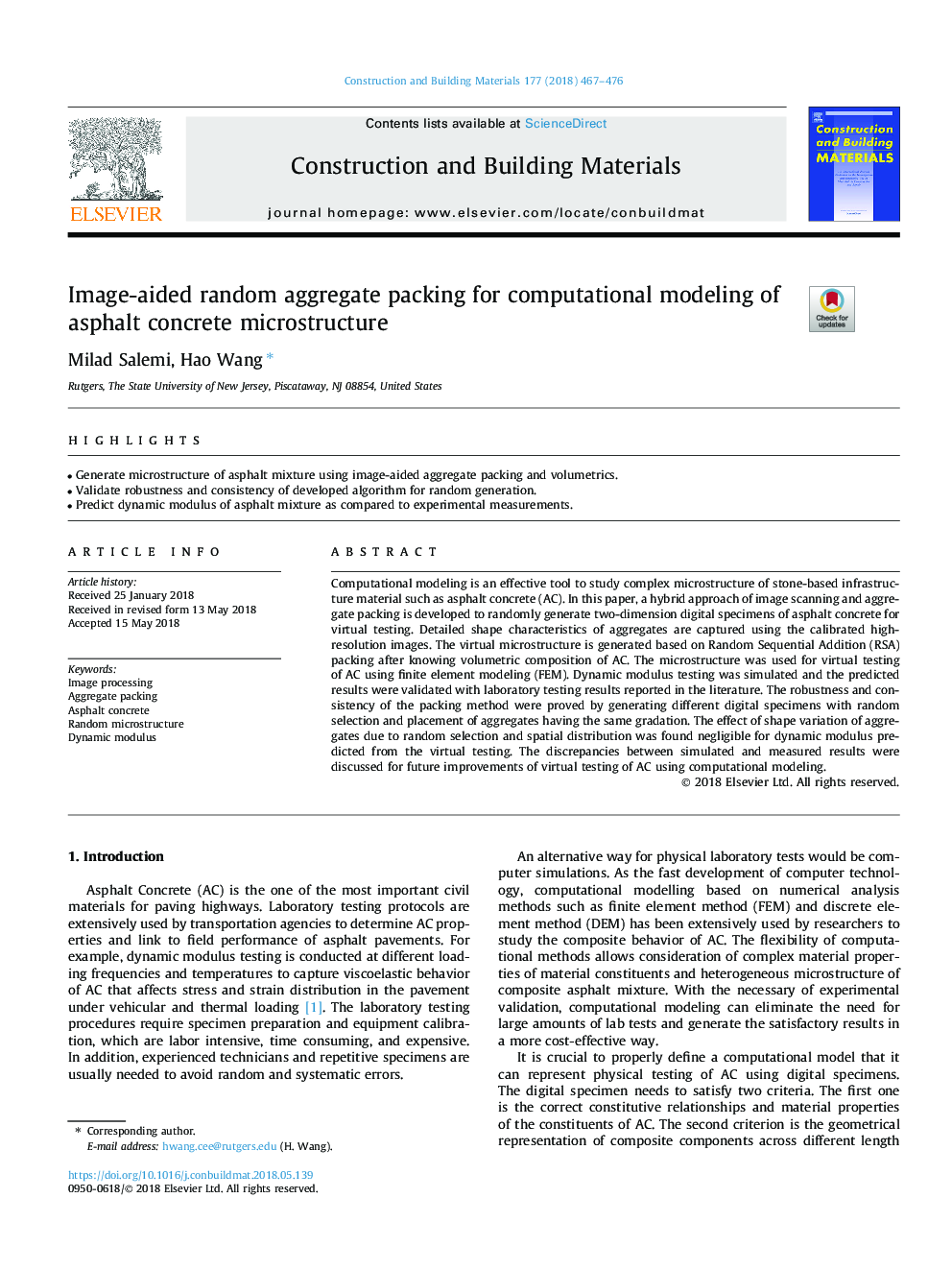| Article ID | Journal | Published Year | Pages | File Type |
|---|---|---|---|---|
| 6713096 | Construction and Building Materials | 2018 | 10 Pages |
Abstract
Computational modeling is an effective tool to study complex microstructure of stone-based infrastructure material such as asphalt concrete (AC). In this paper, a hybrid approach of image scanning and aggregate packing is developed to randomly generate two-dimension digital specimens of asphalt concrete for virtual testing. Detailed shape characteristics of aggregates are captured using the calibrated high-resolution images. The virtual microstructure is generated based on Random Sequential Addition (RSA) packing after knowing volumetric composition of AC. The microstructure was used for virtual testing of AC using finite element modeling (FEM). Dynamic modulus testing was simulated and the predicted results were validated with laboratory testing results reported in the literature. The robustness and consistency of the packing method were proved by generating different digital specimens with random selection and placement of aggregates having the same gradation. The effect of shape variation of aggregates due to random selection and spatial distribution was found negligible for dynamic modulus predicted from the virtual testing. The discrepancies between simulated and measured results were discussed for future improvements of virtual testing of AC using computational modeling.
Related Topics
Physical Sciences and Engineering
Engineering
Civil and Structural Engineering
Authors
Milad Salemi, Hao Wang,
